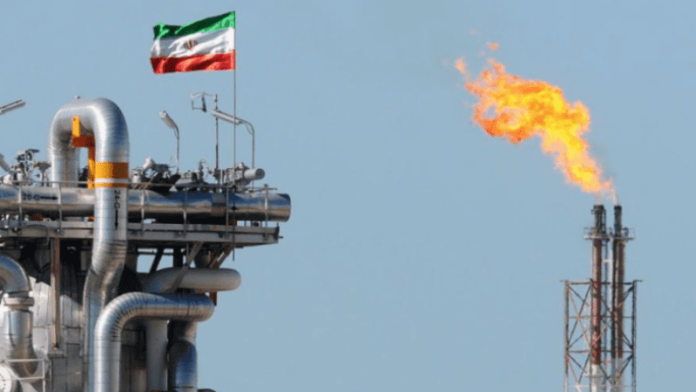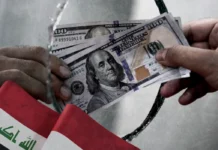According to the American “Washington Institute,” any significant Israeli attack on Iran’s oil and energy facilities will have serious consequences, including the potential to disrupt global energy supplies, particularly those coming from Saudi Arabia, the Gulf, and other countries, as well as from Iraq, China, and Turkey. As a result, the US President Joe Biden’s administration must maintain its pressure on Israel to target Iranian military or security facilities in any potential attacks.
According to the US report, observers confirmed that the distance of more than 1,600 kilometers when the Israeli Air Force bombed Houthi oil facilities in Yemen on September 29 for the second time since July was a warning to Iran, whose main oil fields are much closer, and that there is additional evidence that Israel may consider carrying out strikes against the Iranian oil and gas industry after it pledged a major response to the massive Iranian ballistic missile attack on it on October 1.
However, the American report, which was translated by, thought that an Israeli attack on Iranian energy facilities could have significant effects on the Israeli, Gulf, and global energy markets. It also said that Iran has a lot of experience keeping its production and export capabilities up, as it did in the 1980s during the economically devastating Iran-Iraq war.
Israel has a lot of targets in this Iranian sector, according to the report. However, considering the impact a strike could have on Israel’s infrastructure and the energy markets in the region and around the world, it might be better to think about other targets.
According to the report, Iran’s main vulnerabilities are pumping stations, pipeline junctions, and export facilities. As an illustration, the junction points in the north of Kharg Island, which are regarded as the coastal meeting point for all pipelines in southwestern Iran, where Iran’s primary oil fields are located, serve as an example.
According to the report, Iran’s crude oil production currently stands at approximately 3.95 million barrels per day. About 2 to 2.4 million barrels per day are used as raw materials for refining for domestic consumption, and the remaining barrels are exported. Iran’s oil exports reached 1.82 million barrels per day in March, with China accounting for the majority of these exports.
In the meantime, the report stated that Iran is also the third largest natural gas producer in the world, producing approximately 684 million cubic meters per day. However, the country also imports gas because a significant portion of its production is used domestically for heating and electricity generation. Iran’s domestic gas consumption can reach 700 million cubic meters per day during the cold season, creating a severe shortage.
According to the report, Iran and the Russian company Gazprom signed a long-term “strategic agreement” on October 1 under which Iran will receive 300 million cubic meters of gas per day through a pipeline Moscow plans to build under the Caspian Sea.
The report looked at Iran’s refineries and found that there are 28 oil, condensate, and gas refineries spread out across the country. The Persian Gulf Star gas condensate refinery, which was established and is partially managed by the Iranian Revolutionary Guard and is situated west of Bandar Abbas, close to the Strait of Hormuz, is the largest of these. Its creation limit is 480 thousand barrels each day of condensates, which addresses around 19% of the complete everyday unrefined components for treatment facilities in Iran.
Also, the report said that Iran works around 60 petrochemical plants, some of which can once in a while be utilized to create gas in the midst of crisis, noticing that Iran is one of the biggest gas customers on the planet, and that its vehicles are among the least eco-friendly.
Iran is not known to be a major exporter of refined petroleum products, but it does export to allied nations like Syria and Venezuela, according to the report.
Concerning product and capacity terminals, the report said that Kharg Island in the northern Bay is Iran’s really raw petroleum send out terminal, with an ongoing stacking limit of around 5 million barrels each day. Iran likewise has tremendous over the ground tanks that store 50 to 60 percent of its oil and item stocks, and are helpless against rocket, robot and air assaults.
Additionally, Iran has a small number of underground storage facilities at Maroun and Ghoreh that are generally regarded as less vulnerable to conflict. In addition, Iran stores 15 billion cubic meters of natural gas in two fortified underground storage facilities near Qom and Shiraz, Sarajeh and Shourijeh, to ensure supplies for the winter months.
A successful attack on pumping stations or pipeline intersections could severely disrupt the transport and export of oil, particularly from Kharg and the new Jask terminal outside the Strait of Hormuz, despite the fact that the Iranian oil sector is subject to sanctions for years, lacks foreign investment, and has difficulty obtaining spare parts and modern technologies.
In any case, he noticed that such huge scope assaults on such offices could disturb Iranian oil streams for a really long time or even months, adding while accomplishing such a result would require a significant military exertion utilizing strong, high-accuracy weapons and robots, or through damage tasks, including through digital assaults that could upset control frameworks at treatment facilities, pipelines and product terminals, like what occurred, for instance, in 2023, when it is accepted that the fuel dissemination network was designated by Israeli digital assaults that upset gas supplies cross country for quite a long time, influencing great many corner stores and making long queues.
Although Saudi Arabia needs a relatively high price, perhaps $100 per barrel, for Crown Prince Mohammed’s ambitious development projects represented by “Vision 2030,” such projects also require regional peace and stability, which explains the noticeable Saudi reluctance to be drawn into a wider war in the Middle East, the report stated that the escalating geopolitical tensions in the Middle East have already led to a rise in oil prices. On October 7, oil prices reached more than $80 per barrel.
According to the report, Riyadh could theoretically make up for any global oil shortage caused by an Israeli attack on Iranian infrastructure. However, the kingdom’s main oil fields and facilities are located across the Gulf from Iran, making them vulnerable to attack, just like the Saudi Abqaiq complex was attacked in September 2019.
In addition, the report stated that “any Israeli strikes against Iran’s oil, gas, and petrochemical industries would likely lead to Iranian and ‘proxies’ attempts to attack key Israeli energy targets, including the largest power and desalination plants, the three offshore gas fields, and refineries in Haifa and Ashdod.”
Noting that Iran had previously threatened to close the Strait of Hormuz if it was no longer able to export its oil, the report added that the escalation could result in threats against oil facilities in the countries that make up the Gulf Cooperation Council, disrupt commercial shipping through the region, or threaten Western maritime assets.
However, the report stated that any disruption as a result of the Israeli attack could result in additional Western intervention, which Tehran might want to avoid.
The report noted that Turkey and Iraq depend on Iranian natural gas imports for their heating and electricity generation, so any interruption in Iranian gas production will affect these two nations.
The report finished up by reviewing US President Joe Biden’s assertions on October 4, in which he called for avoiding sending off assaults on Iranian oil offices, adding that the US organization should keep on deterring Israel from striking such Iranian targets.
In contrast, the report was of the opinion that Israel could achieve better results by concentrating any attack on a single regime-affiliated military, security, or intelligence facility, particularly the Basij headquarters or Revolutionary Guards, facilities that directly support the Iranian missile program, or a regional facility associated with the work of “agents.”
The report came to the conclusion that attacking a target of the regime would less likely result in an all-out war and may not pose the same level of threat to regional and global energy supplies.





